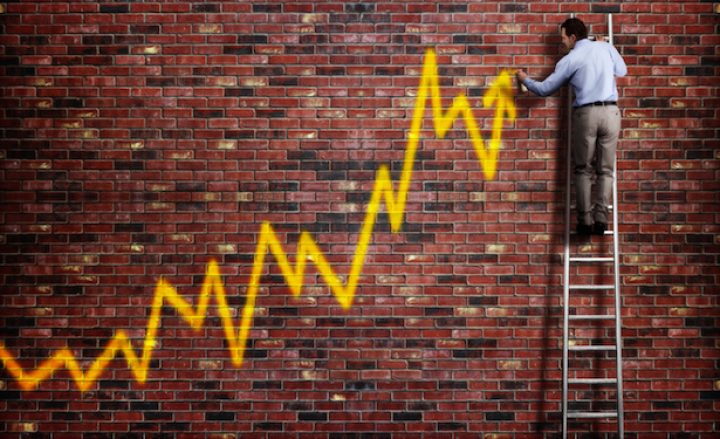
Optimism for Equities
Global equities have had quite the comeback since the Brexit referendum. After plummeting more than 5 percent in the two trading days following the surprise “Leave” result of the June 23 referendum, the S&P 500 took just ten days to reach a new all-time high. The Euro Stoxx 50 and MSCI All-Country World Index have likewise climbed, with both up more than 10 percent from their post-Brexit troughs. Can the rally continue? Equity strategists on Credit Suisse’s Global Markets team believe that it will, and that the upward march in global stocks will continue into 2017.
That optimism is rooted in good news on the manufacturing front. New orders in the U.S. boosted the Markit purchasing managers index (PMI) to an eight-month high in July, while new orders increased in 12 of 18 industries surveyed by the Institute for Supply Management. Rising new orders, combined with more than a year of inventory declines, have set the stage for a strong inventory rebuild that would drive a pickup in industrial production. Globally, new orders are at a five-month high, pointing toward a mild increase in global GDP in the coming months.
A combination of both committed and hoped-for fiscal stimulus measures could also spur more demand for stocks. Both Canada and Japan announced new spending plans in recent weeks, and both U.S. presidential candidates have floated plans to increase infrastructure funding by hundreds of billions of dollars. All that fiscal easing should lead to higher inflation expectations, making equities appealing to investors in search of inflation hedges. Analysis by Credit Suisse Global Markets analysts shows that stocks tend to re-rate to roughly 20 times earnings when once-low inflation expectations—those in the 0 to 3 percent range—begin to rise.
Continuing loose monetary conditions around the globe also bode well for stocks. Credit Suisse believes that policymakers would rather risk inflating an asset bubble or even triggering above-target inflation than to tighten policy too soon. What’s more, the prospect of tightening is hardly much of a concern in the short term: Economies around the world face strong deflationary forces such as Chinese overinvestment, a steady increase in automation and artificial intelligence that threatens many human jobs, and the rise of the sharing economy, which has made pricing more transparent and lowered the barriers to entry in numerous industries such as hospitality (Airbnb) and transportation (Uber).
Credit Suisse also believes that investors are overestimating the relative riskiness of equities. Consensus estimates of the equity risk premium stand at 7.4 percent, while Credit Suisse estimates the correct number is 5.8 percent. That’s still higher than the premium the Bank’s strategists say is warranted, a mere 5 percent. Accounting for factors such as the subdued ratio of volatility in equities compared to bonds and low levels of economic policy uncertainty, the strategists believe the equity risk premium could fall to 4 percent, which suggests further upside for stocks.
All that said, the equities picture isn’t entirely rosy. There are hints, for example, that earnings momentum may have peaked. Two factors that helped drive earnings in the first half of the year, a weaker dollar and a rebound in commodity prices, are unlikely to persist into the second half, while rising wages are also threatening to squeeze profit margins. In the U.S., the Federal Reserve Bank of Atlanta reported median hourly wage growth of 3.6 percent in June, up from a low of 1.6 percent in 2010. With growth in the U.S. working-age population slowing, the labor market will likely tighten further, pushing wages higher.
And then there’s China. The country experienced a “positive growth surprise” in the first half of 2016, supported by a recovery in the real estate sector, infrastructure spending, and an increase in lending, but all three factors may have played themselves out for the time being. House prices rose nearly 8 percent in June, but the number of property transactions, which lead housing prices by about six months, peaked earlier this year. Infrastructure spending in China has accelerated by 20 percent year-on-year, but Credit Suisse economists question the sustainability of the government’s spending surge, which has received virtually no support from the private sector. Meanwhile, private lending has fallen dramatically in the second quarter of 2016.
Credit Suisse believes that mid-2017 could be where the rally finally runs out of gas. At that point, U.S. wage growth will have accelerated sharply while the amount of outstanding Chinese loans may have finally drawn even with bank deposits, at which point monetary authorities will have to print money to roll over non-performing loans. That, in turn, would cause the yuan to depreciate, making Chinese goods more competitive in the global marketplace, which would dent returns for most other global exporters. Investors will also likely begin to discount the probability of further fiscal easing. But until then, expect the good to outweigh the bad for global equities.
Categories: You might also like
Sorry, comments are closed for this item.
